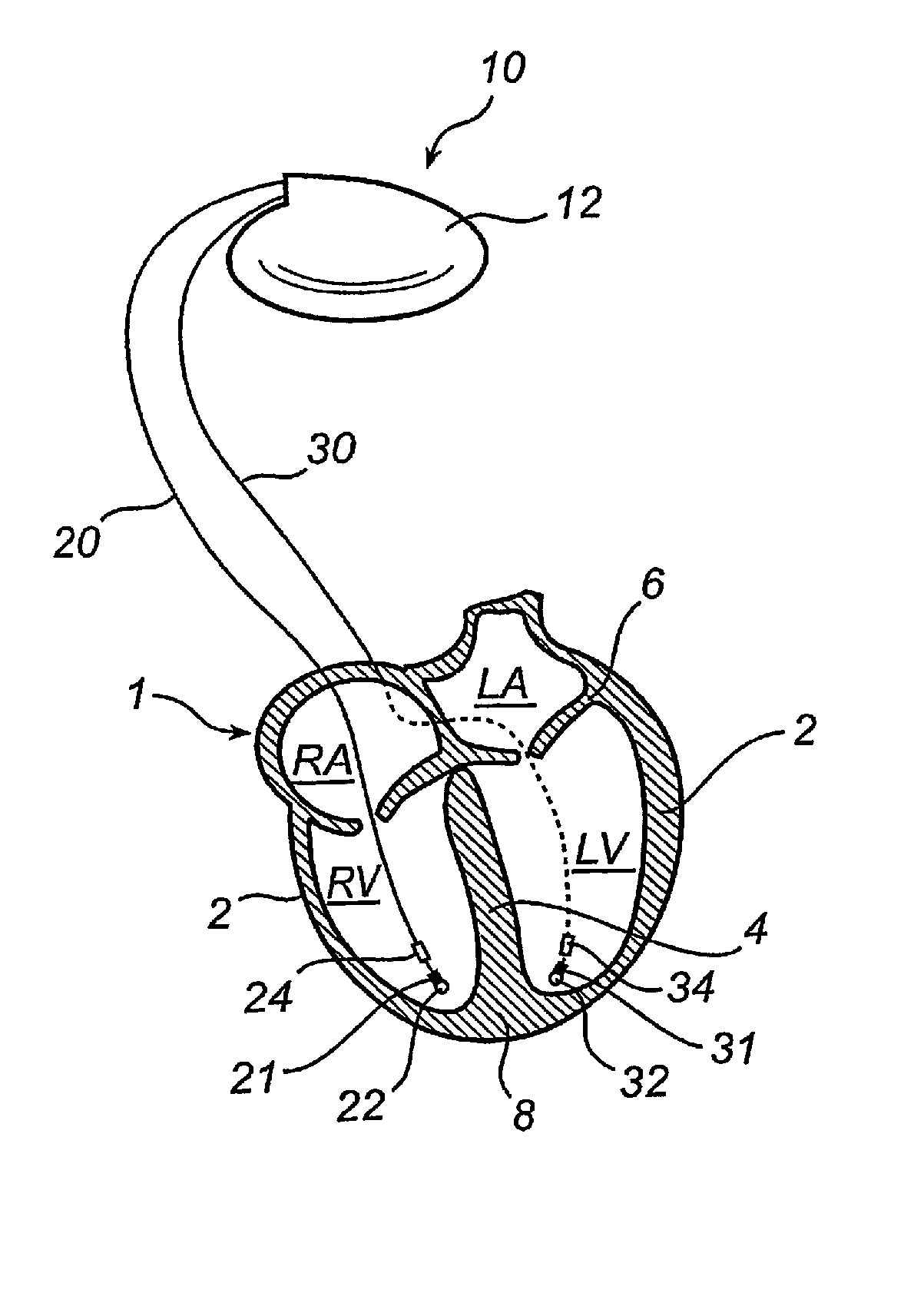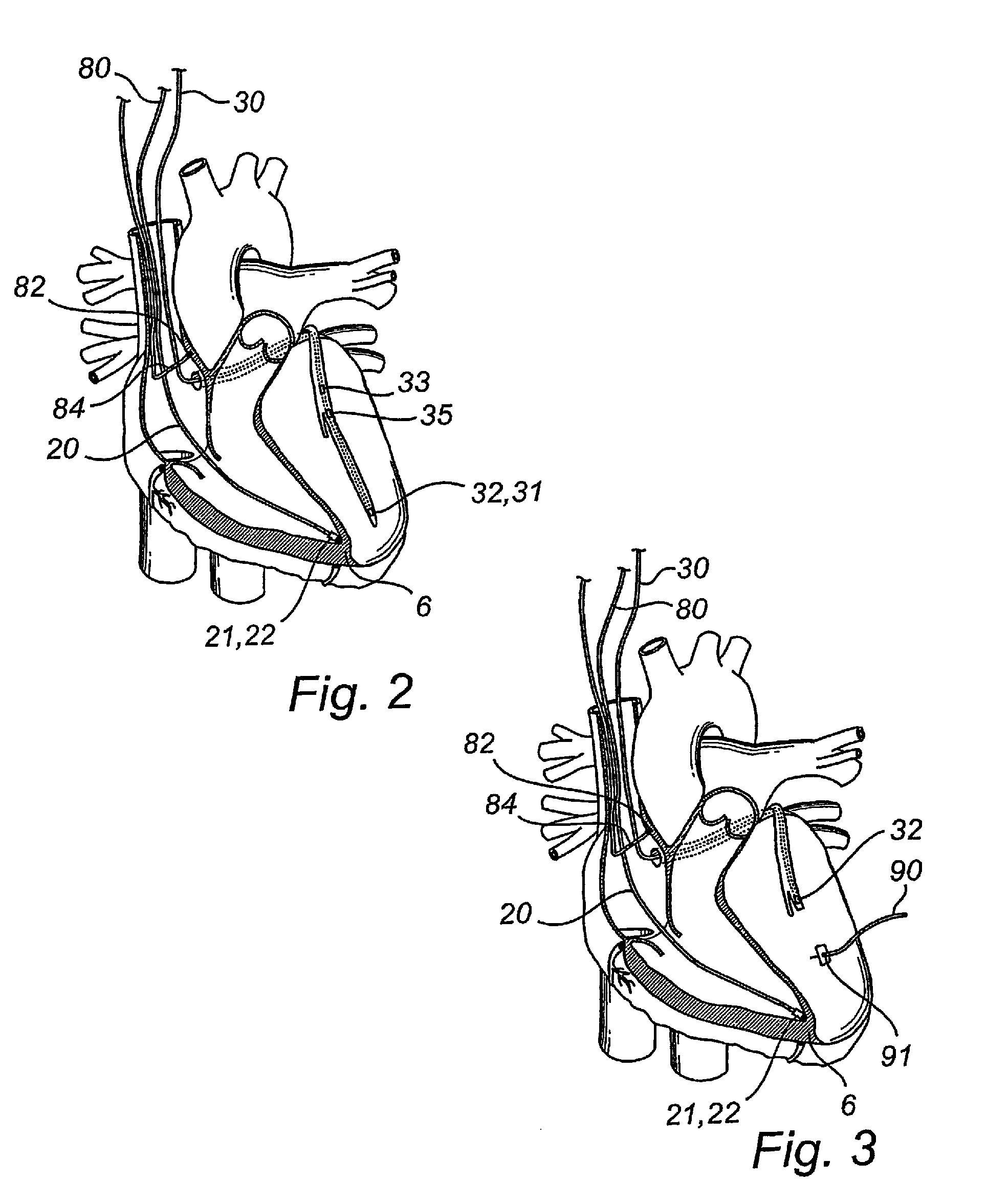Implantable cardiac stimulator, system, device and method for monitoring cardiac synchrony
a cardiac synchrony and implantable technology, applied in the field of implantable cardiac synchrony monitoring devices, can solve the problems of not being able to meet the needs of patients, suffer compromised pumping performance, and reduce the pumping efficiency of the heart, so as to improve the cardiac synchrony of the heart cycle, maintain or improve the cardiac synchrony, the effect of improving the cardiac synchrony
- Summary
- Abstract
- Description
- Claims
- Application Information
AI Technical Summary
Benefits of technology
Problems solved by technology
Method used
Image
Examples
Embodiment Construction
[0057]The following is a description of exemplifying embodiments in accordance with the present invention. This description is not to be taken in a limiting sense, but is made merely for the purpose of describing the general principles of the invention. Thus, although particular types of heart stimulators will be described, such as biventricular pacemakers with or without atrial sensing and / or stimulation, the invention is also applicable to other types of cardiac stimulators, such as univentricular or dual chamber pacemakers, implantable cardioverter defibrillators (ICD's), etc.
[0058]With reference first to FIG. 1, there is shown a stimulation device 10 in electrical communication with a patient's heart 1 via two leads 20 and 30 suitable for delivering multi-chamber stimulation (and possible shock therapy). The heart illustrated portions of the heart 1 include the right atrium RA, the right ventricle RV, the left atrium LA, the left ventricle LV, cardiac walls 2, the ventricular se...
PUM
 Login to View More
Login to View More Abstract
Description
Claims
Application Information
 Login to View More
Login to View More - R&D
- Intellectual Property
- Life Sciences
- Materials
- Tech Scout
- Unparalleled Data Quality
- Higher Quality Content
- 60% Fewer Hallucinations
Browse by: Latest US Patents, China's latest patents, Technical Efficacy Thesaurus, Application Domain, Technology Topic, Popular Technical Reports.
© 2025 PatSnap. All rights reserved.Legal|Privacy policy|Modern Slavery Act Transparency Statement|Sitemap|About US| Contact US: help@patsnap.com



